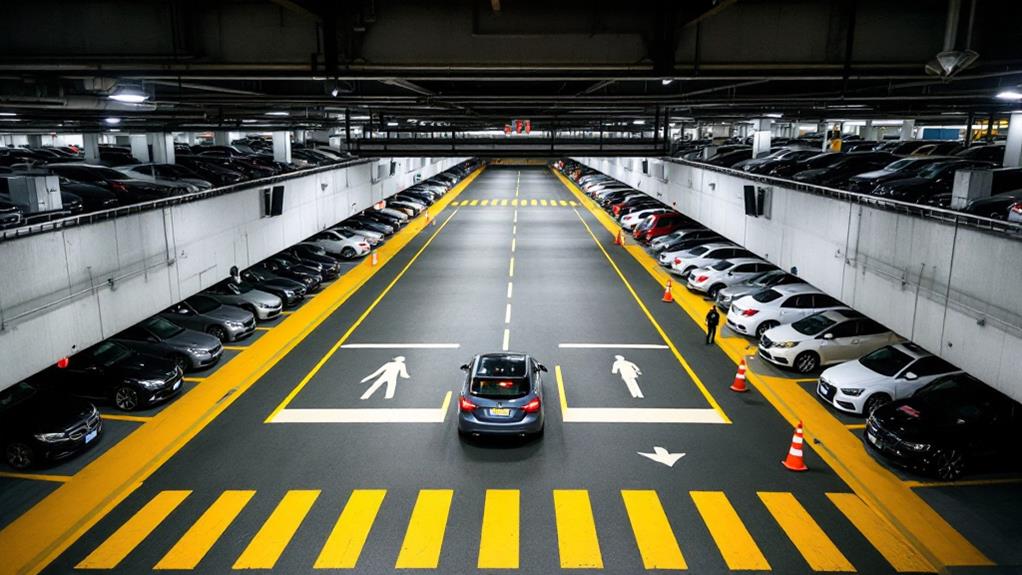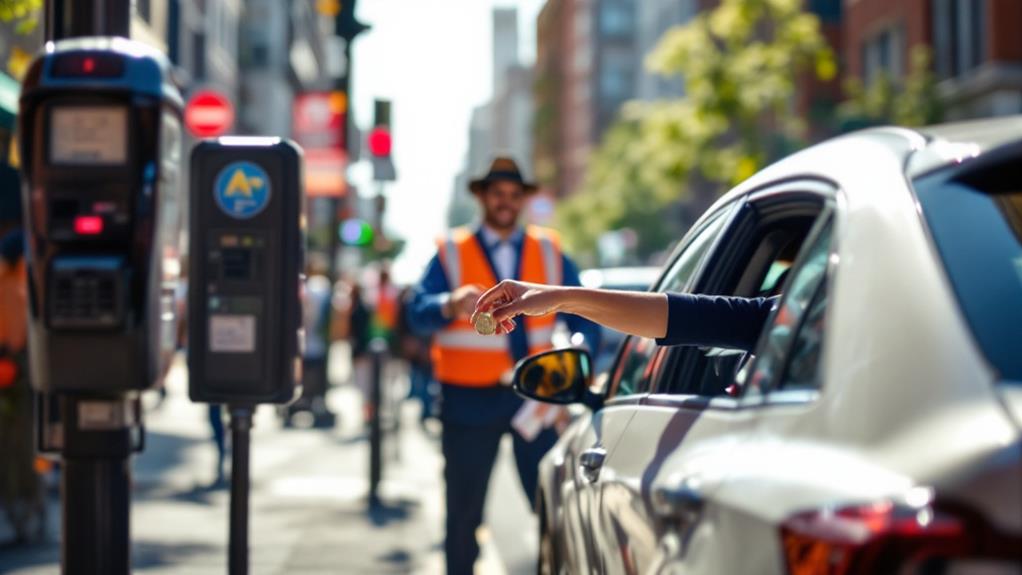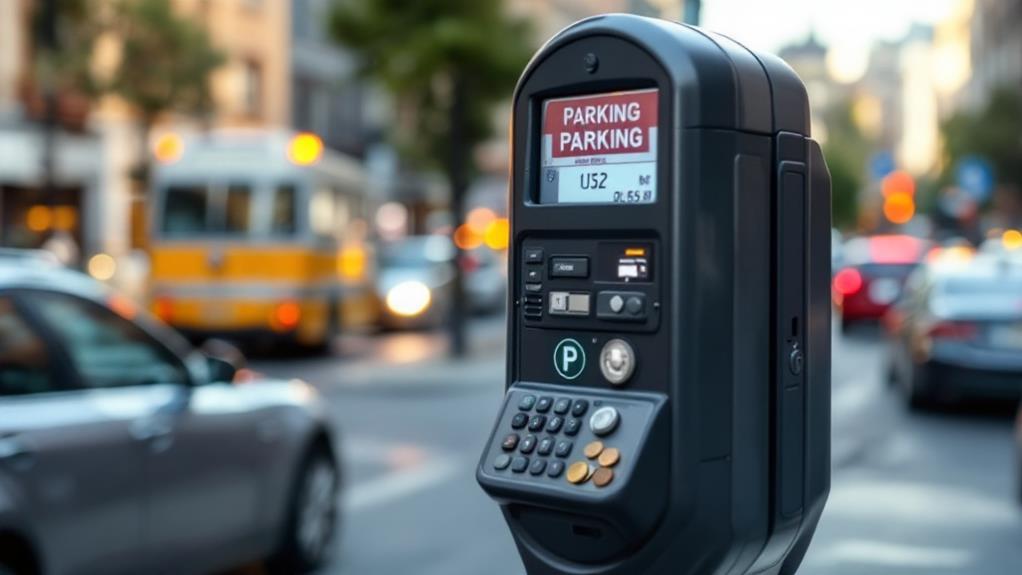Understanding Alternate Side Parking Rules in the City
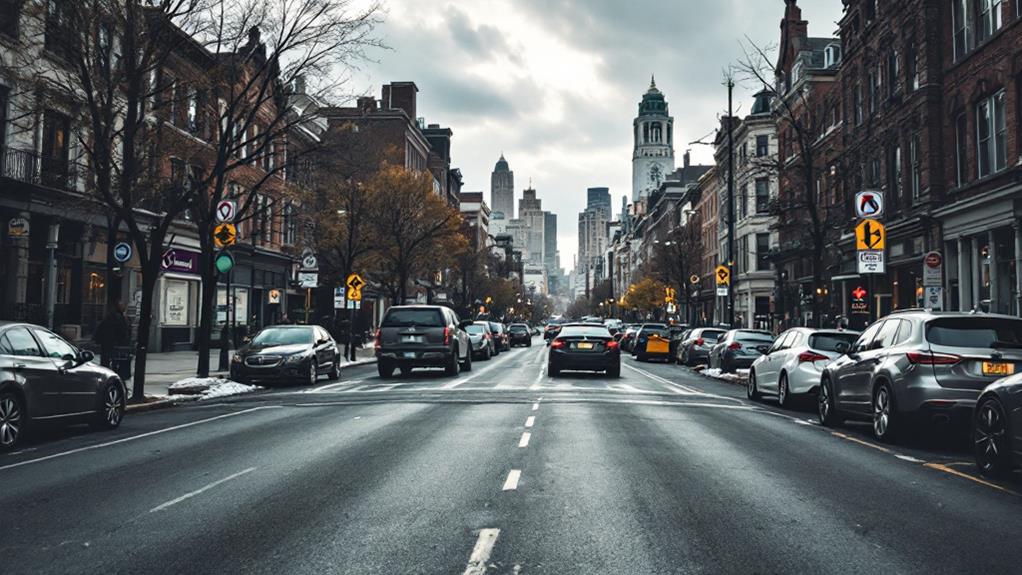
Alternate side parking rules help cities keep streets clean by allowing street sweepers access to curbs. You'll find these regulations displayed on street signs, indicating specific days and times when you must move your vehicle. Compliance is imperative to avoid fines and tickets. While the rules can vary by neighborhood or during special events, they generally follow a predictable pattern. Apps and online services can help you traverse the intricacies of alternate side parking in your area. Although these regulations can be inconvenient, they play an essential role in maintaining clean, attractive urban environments. Understanding the subtleties of these rules can make city living much smoother.
Origins of Alternate Side Parking
New York City's street-cleaning revolution began in the 1950s with the introduction of alternate-side parking. This innovative system was designed to address a growing problem in the lively metropolis: the accumulation of trash on city streets. As you can imagine, parked cars were making it difficult for sanitation crews to effectively clean the roads, prompting city officials to take action.
The solution they devised was both simple and effective. By requiring you to move your vehicle to the opposite side of the street on designated days, alternate-side parking rules created clear access for street sweepers. This clever approach balanced the needs of drivers like you with the city's sanitation efforts, resulting in a cleaner urban environment for everyone.
When you participate in alternate-side parking, you're contributing to a decades-old tradition that has noticeably improved the cleanliness of New York City's streets. The system typically requires you to move your car once or twice a week, allowing sanitation crews to thoroughly clean areas that would otherwise be inaccessible. By following these rules, you're helping maintain the city's cleanliness and ensuring that street cleaning efforts remain effective in the face of constant urban challenges.
How Alternate Side Parking Works
Three key components make up the backbone of alternate side parking: timing, signage, and enforcement. In New York, you'll need to be aware of specific days and times when you must move your vehicle to allow for street cleaning. These parking regulations are typically displayed on street signs, which indicate when you need to relocate your car to the opposite side of the road.
If you fail to comply with these rules, you'll likely face parking tickets and fines. To help you navigate this complex system, various apps and services offer maps of NYC's alternate side parking rules. These tools can be pivotal for both residents and visitors trying to avoid costly violations.
It's important to note that while the system was designed to facilitate street cleaning, it has been criticized for potentially causing more traffic congestion than it solves. As you maneuver through the city's streets, you'll need to be vigilant about these rules to avoid penalties. Keep in mind that the regulations can vary by neighborhood and may change during holidays or special events, so it's essential to stay informed and plan accordingly.
Benefits for Urban Communities
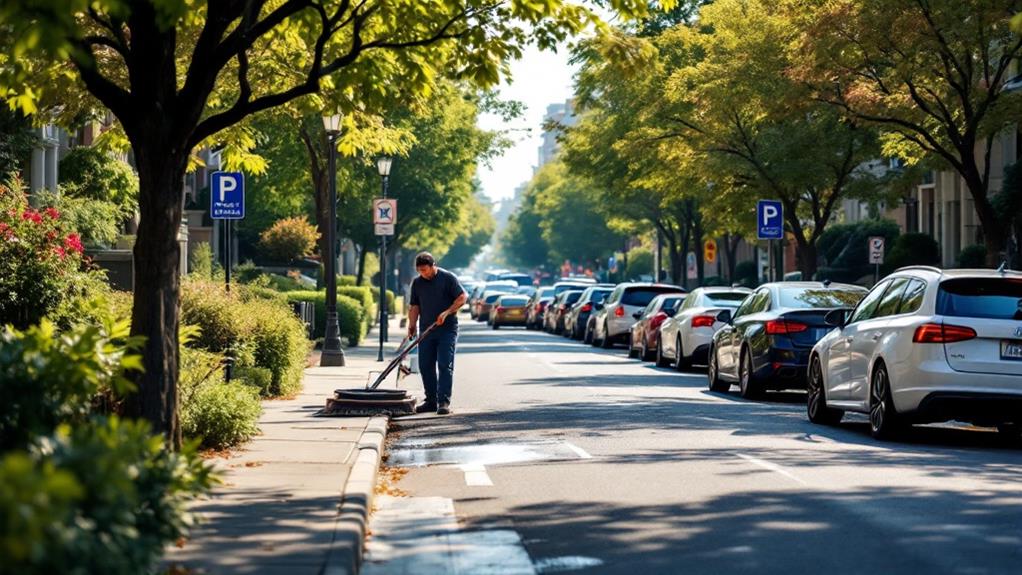
Despite its inconveniences, alternate side parking offers significant benefits to urban communities. In place since the 1950s in New York City, this practice has proven essential for maintaining clean and visually appealing neighborhoods. By requiring parked cars to move on designated days, alternate side parking allows sanitation crews to access and thoroughly clean city streets.
The primary advantage of this system is the efficient removal of accumulated trash and debris. When cars are cleared from the streets, municipal cleaning services can operate more effectively, reaching areas that would otherwise be inaccessible. This thorough street cleaning not only improves the overall aesthetics of neighborhoods but also contributes to increased property values.
You'll notice that areas with consistent alternate side parking enforcement tend to have cleaner, more attractive streets. This is because the practice enables sanitation crews to perform their duties more extensively, resulting in a visibly cleaner urban environment. By facilitating regular and thorough street cleaning, alternate side parking plays a vital role in maintaining the cleanliness and appeal of urban communities, benefiting both residents and visitors alike.
Challenges and Criticisms
While alternate side parking offers benefits, it's not without its detractors. Critics argue that the system causes more problems than it solves, particularly in vibrant urban areas like New York City. There's ALWAYS a new challenge for residents and visitors alike when it comes to maneuvering these rules.
The main criticisms of alternate side parking include:
- Increased traffic congestion as drivers search for new spots
- Inconvenience for residents, especially those with limited mobility or resources
- Confusion due to complex signage and varying rules across neighborhoods
- Potential decrease in street cleaning effectiveness
These challenges disproportionately impact lower-income residents who may lack access to alternative parking options or the ability to move their vehicles during restricted times. Studies suggest that the parking restrictions might actually hinder street cleaning efforts by forcing cars to relocate rather than allowing cleaning around them.
To address these concerns, some argue that cities should make sure to reevaluate their approach to street cleaning and parking management. This could involve simplifying rules, improving signage, or exploring more efficient cleaning schedules that don't require widespread vehicle relocations.
Variations Across Different Cities
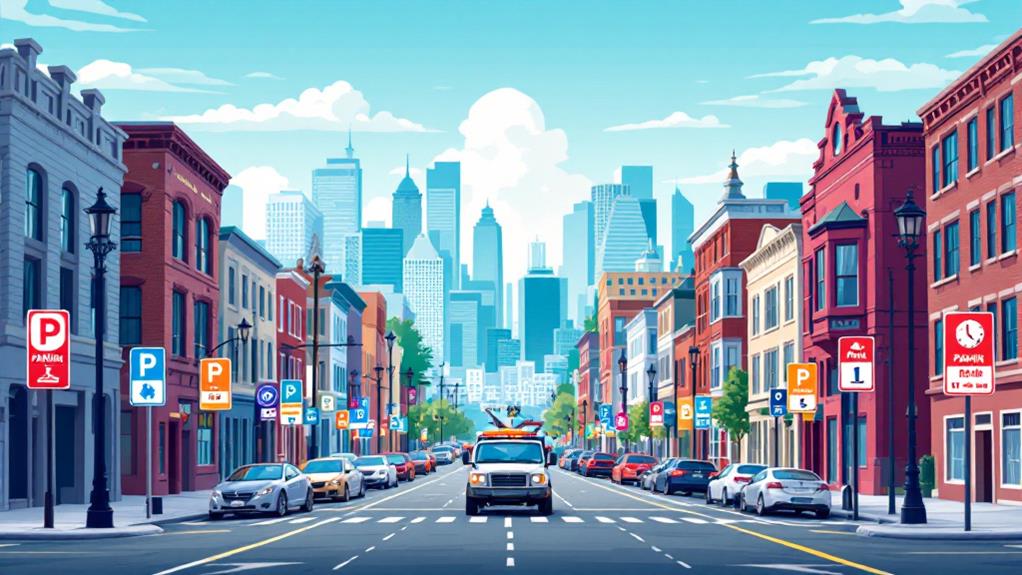
How do cities around the world address the challenge of alternate-side parking? You'll find a wide range of approaches, each customized to local needs and conditions. In Sweden, you'll see an odd/even house number system, while Denmark takes the opposite approach. If you're in Belgium or France, you'll need to remember the half-monthly rule, where parking sides switch every 15 days.
In Spain, cities like Barcelona change their regulations every three months, adding another layer of complexity for residents and visitors alike. Meanwhile, in the Netherlands, you won't need to worry about relocating your car at all. They've adopted a system where street sweepers are accompanied by workers who clean around parked vehicles.
These diverse policies reflect each city's efforts to balance the needs of drivers, street cleaning, and traffic flow. While some cities, like New York, suspend alternate-side parking on certain holidays, others maintain strict enforcement year-round. The key is to familiarize yourself with local rules, as they can vary greatly from one place to another. Remember, what works in one city might not be suitable for another, leading to this fascinating patchwork of parking regulations across the globe.
Tips for Compliance
Alternate-side parking rules can be a headache for city dwellers, but there are ways to make compliance easier. To avoid a parking ticket, it's essential to understand the signs in your area. They'll clearly indicate when you need to move your car to the correct side of the street for street cleaning.
One of the best ways to stay on top of these rules is by using parking apps like ParkMobile. These apps provide updates on Alternate Side Parking rules and can send prompts when it's time to move your vehicle.
- Always check for legal holidays or severe weather events that might suspend the rules
- Be prepared to move your car during scheduled times, as street cleaners are likely to appear
- Double-check that you're on the correct side of the street before leaving your vehicle
- Set multiple alerts to avoid forgetting and risking a ticket or tow

